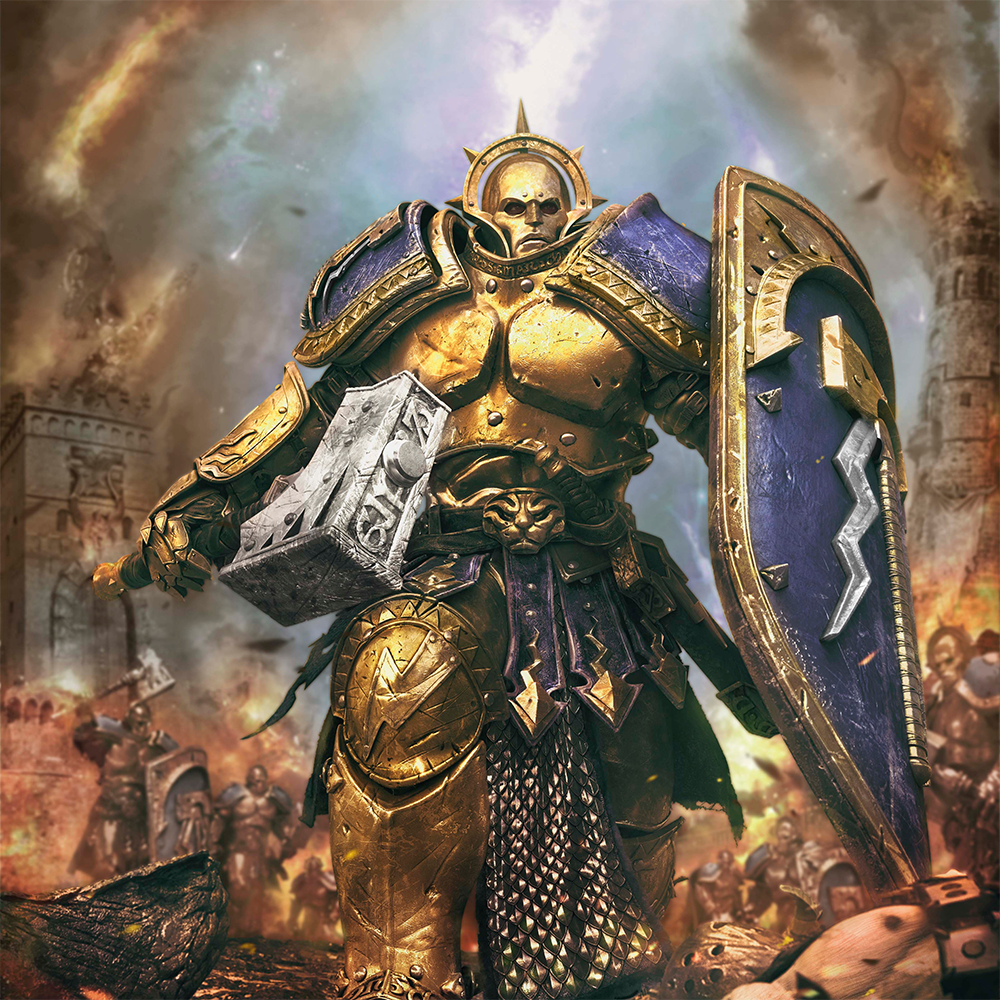Age of Sigmar has come a long way in the last four years. From the points-less wasteland that was, to yearly points updates, rapid-fire battletome releases, and a semiannual FAQ, things have undoubtedly improved from a pitched battle perspective.
With the constantly shifting nature of the current AoS landscape, however, players may find their painstakingly composed competitive lists invalidated by one or more of the many changes. (I speak from experience as this recently happened to me after the release of the General’s Handbook 2019.)
As a result of the nullification of my recent list (due to points increases to Celestar Ballistas among other things), I went back to the list design drawing board. While I’m still not sure exactly where my list will land (or even which faction I might end up playing), there are certain things that I know will need to be accounted for in the current AoS environment.
The first concern that must be considered is number of drops. The current sweet spot for choosing first turn order seems to sit around three or four drops. You basically have to decide if you can squeeze your army into a few drops via battalions (or potentially Kharadron Overlord airships), or build a list that doesn’t care if it goes first or second (protecting your units against an alpha strike while still being able to threaten your opponent if they give away the first turn). The second point can be accomplished by starting units off of the board (Stormcast Eternal Scions of the Storm ability, Legions of Nagash Gravesites, etc.), utilizing fast moving units (such as Idoneth Deepkin Morrsarr Guard) or by taking advantage of spells or abilities that allow units to move in the hero phase or teleport across the board (all factions have access to both the Lauchon the Soulseeker and Soulscream Bridge endless spells introduced in the Forbidden Power supplement, and many factions have their own similar abilities or spells).
Another issue is the ever expanding list of factions that have a mechanic that allows them to strike first in combat (or similarly force one or more enemy units to strike last). The list currently includes Slaaneesh, Fyreslayers, and Flesh-eater Courts to name a few. There are a few ways to defend against this tactic. The first, and maybe most obvious, is to play one of these “fight first” combat factions yourself, fighting fire with fire, so to speak. Another way is to build your list around units that have abilities that allow models to fight after being slain (Skaven, FEC, Khorne, etc.), or super tanky melee units (Hearthguard Berzerkers). You could also forgo combat altogether and build around magic, board control, or shooting (or all of the above).
Speaking of shooting, gun lines (both static and mobile) also need to be factored into your list building calculations. There are armies that put out high volume shooting (Bonesplitterz, Tzeentch Horrors, Vanguard-Raptors with Hurricane Crossbows), armies that put out high quality shooting (Stormcast ballistas, everything KO, Kurnoth Hunters) and armies that put out long range mortal wounds (Skaven, Vanguard-Raptors with Longstrike Crossbows, Tzeentch Skyfires). There are certainly ways to build around these types of lists, fast moving units, threat overload, and units that start off of the board are all valid options. Another good tactic is to stack as many de-buff spells and abilities as you possibly can on your opponent’s most dangerous shooting unit or units (the Geminids of Uhl-Gysh, Prismatic Palisade, and Shards of Valagharr Endless Spells all provide -1 to hit modifiers and are available to all factions).
Magic is another area of concern, this means both normal spell casting as well as Endless Spells. Some factions are capable of dominating with magic (Tzeentch and Legions of Nagash immediately come to mind), and if you don’t play one of said factions you will find yourself in an uphill battle when it comes to casting. There are some tricks to build into your list to help yourself offset at least some of their magic, however. One way is to try to add in an ability to automatically unbind a spell (Knight-Incantor, Spellweaver, Khorne Blood Tithe table), this at least gives you an opportunity to unbind a key spell at a critical moment in the game. Another way is the Endless Spell Malevolent Maelstrom. I rarely see this spell used in lists, but at ten points it does have some utility. It has a 26″ threat range, is easy to cast (casting value of five), and it allows an extra unbind attempt on all spells cast within 12″ (it also has the potential to deal mortal wounds each round, but the real use is the unbinds or to force an enemy wizard to waste a casting attempt by dispelling it).
Finally, you must also think about board and objective control when putting together a competitive list (scoring points is, after all, the whole point). What are you going to do when someone puts 100 plus models on the table, blocks your movement by casting multiple large footprint Endless Spells, or summons what seems like an entire new army onto the table?
The above list of talking points is certainly not all encompassing, but each of these items are important to think about when list building.
Next week I will discuss the changes that occurred to my previous list as well as dig a bit deeper into some specific list builds that I am considering going forward.
What other list building concerns do you have in the current AoS meta? What list concepts have been working well for you? Let me know in the comments.
And remember, Frontline Gaming sells gaming products at a discount, every day in their webcart!


